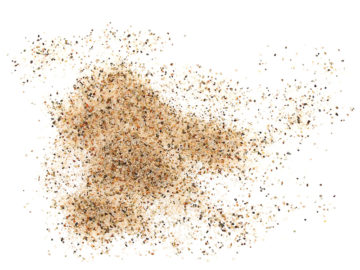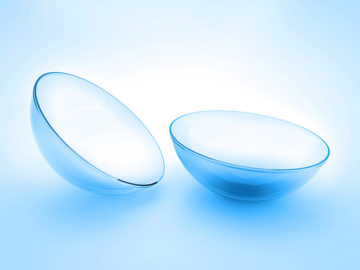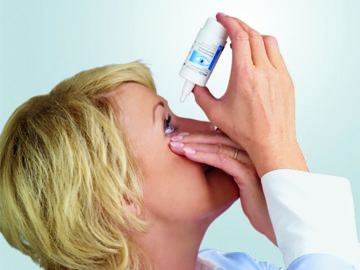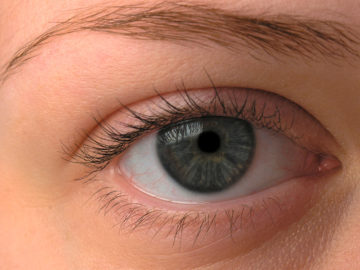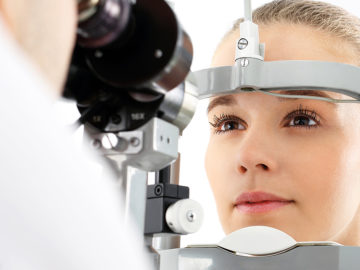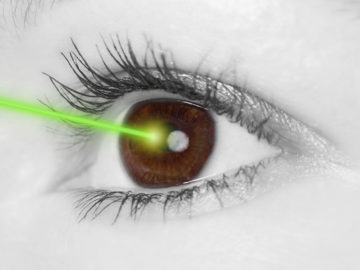Conjunctivitis – a very common eye disease

Eine Bindehautentzündung äußert sich typischer Weise durch eine Rötung der Augen. Weitere Symptome können hinzukommen.
Conjunctivitis is one of the most common eye diseases. Among other things, it is accompanied by redness, itching, increased secretion of tears and foreign body sensation. There are many causes of conjunctivitis – bacterial or viral pathogens are possible causes as much as anatomical causes, allergies or autoimmune diseases. Because of the variety of disease triggers, the treatment can also be varied correspondingly.
What actually is the conjunctiva?
The conjunctiva is a transparent mucous membrane which covers the inner surface of the eyelids and the surface of the eye all around the cornea. Together with the tear film, it facilitates the smooth movement of the eyeball and the eyelids. Various cell types take on different tasks and functions in the conjunctiva. The so-called goblet cells are responsible for the productsion of mucous. This mucous gives the tear film its ability to stick to the cornea (adhesive property). Furthermore, there are lacrimal glands in the conjunctiva which lubricate the surface of the eyeball. The mucous membrane also contains different cells of the immune system which enable the eye to protect itself against different pathogens.
Conjunctivitis has many causes
The causes of conjunctivitis can be very varied. A so-called nonspecific conjunctivitis can be caused, among other things, by anatomical features of eyelids or lashes causing irritation, by overexertion, wearing contact lenses or a lack of tears. The symptoms of conjunctivitis and dry eyes mutually influence and favour one another.
In the case of specific conjunctivitis, the inflammatory reaction can be triggered by an infection with pathogens. These include bacteria, fungi, parasites or viruses, in particular herpes and adenoviruses. Allergic reactions and autoimmune diseases are also triggers for conjunctivitis.
Red eyes, burning and foreign body sensation
Conjunctivitis can be in one eye or in both. Inflammation that begins in one eye indicates an infection with viruses or bacteria, and disease in both eyes is usually the result of allergies or dry eyes.
Typical for conjunctivitis is a reddening of the eyes due to increased blood circulation in the blood vessels. It is normally accompanied by foreign body sensation, itching and watery eyes. Quite often, the eyes are sensitive to light and compulsive, frequent blinking occurs.
Watery, mucous or purulent secretion often occurs with conjunctivitis caused by bacteria. If, on the other hand, conjunctivitis is caused by viruses, follicles can form in the conjunctiva. The lower eyelid in particular is affected by this collection of cells: small bulges with a transparent interior appear. If the conjunctivitis is as a result of an allergy, it can lead to glassy swelling of the conjunctiva, in part very pronounced. This is referred to as chemosis. The growths on the conjunctiva can protrude from the palpebral fissure, that is, between the upper and lower eyelid. In addition to that, protuberances of the conjunctiva, so-called papillae, are not uncommon with allergies.
Go to the doctor if you have conjunctivitis
If you have conjunctivitis, you should not try to treat it yourself, but rather consult a doctor. Because conjunctivitis can have many causes, the possible treatments are also disparate. First of all, the doctor has to determine what the cause is before they can start the right treatment. The diagnosis entails a thorough examination of the eyes; the eyelids are folded back and possibly a swab test is taken for further analysis.
In the case of nonspecific causes, such as dry eyes or environmental irritants, treatment with eye lubricants is normally the case. At night time, eye ointments are especially good as they provide long-lasting, intensive lubrication.
The drug treatment possibilities for all specific causes are very broad: conjunctivitis triggered by the herpes simplex virus can be treated with antivirals such as Acyclovir or Valacyclovir, which impede the proliferation of the viruses. For allergies, a treatment with anti-allergy eye drops (H1 antihistamines, mast cell stabilisers) or corticosteroids, such as cortisone, are possible. Bacterial infections, in contrast, are treated with antibiotics.


